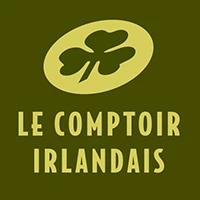Checked shirt
The checkered shirt often refers to the lumberjack look, but in reality it refers more closely to the tartan, which is a woolen fabric with coloured checks, typical of the Celtic people. Nevertheless, the checkered shirt remains timeless and has become a must-have for men.
The main material used in the manufacture of shirts is cotton.
Through our collection of men's shirts, discover carefully crafted cotton shirts from Out of Ireland and Barbour.
The choice of the size of the checks can be important. The smaller the check size, the more stylish the shirt.
The weekend is probably the best time to wear a check shirt. The check shirt can be worn open over a t-shirt with jeans or under a light sweater. To complete the casual look, add a pair of low top trainers.
It can also be worn to the office. A slim-fitting checked shirt with rolled-up sleeves will look particularly smart, whether combined with suit trousers or jeans.
Checked shirts are often made of flannel, which is thick and ideal for wearing in winter. A common mistake is to systematically associate the flannel shirt with the tartan pattern: flannel is a type of fabric, while tartan is a type of pattern.
The two may be compatible but they don't necessarily go together!
Where did the checked shirt come from?
The history of the checked shirt is directly related to tartan, a fabric with crosswise stripes of different colours. It was originally found on woollen fabrics called tartan. In Scotland, each tartan pattern designates a particular clan, each family having its own unique pattern. In 1747, after the Battle of Culloden between the Scottish clans and England, the British authorities wanted to remove any emblem of Scottish culture and therefore banned the wearing of tartan, as it was seen as a symbol of opposition to England. Prince Charles Edward Stuart, who led the resistance against England, wore what now looks like a checked shirt.






